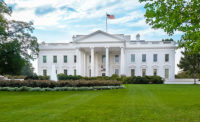Looks like we’re going to have to outfit workers with wearable devices to monitor their blood pressure and heartbeat to be on the alert when stress levels driven by office and assembly line political chatter get dangerously high strung. Perhaps you’ve read or heard about a new poll by the American Psychology Association (APA) that indicates distress over politics has increased at work – with several negative consequences.
Tense times
About one in four employees surveyed report that since the presidential election, debates and conflicting views about the tenor of the times has left them feeling tense or stressed out. Almost half of those surveyed (40 percent) say today’s “you’re either with us or against us” polar environment is a distraction with various downsides. Productivity drops as folks stand around or extend lunch breaks to argue their views. Call it DC downtime. Another result is worsening quality of goods as distracted workers arguing over who’s right and who’s wrong don’t pay attention to the job at hand. Of course inattention increases the odds of injuries. The goal of having an engaged and collaborative work culture is taking a hit due to heightened hostility, too. Supposedly teamwork has taken a blow as 27 percent of survey respondents say they now have a more negative view of co-workers.
So far, there are no reports of a jump in workplace violence due to the divisions we’re currently fighting through.
The survey authors conclude the workplace has not settled down since the election. Rather, 24/7 news coverage has kept politics front and center and kept work environments on edge. About one-third of respondents say they have watched co-workers arguing about politics, and about one-quarter admit to avoiding certain fellow workers because of their political views.
The root cause of this tension is not party affiliation, according to David Ballard, the director of the APA’s Center for Organizational Effectiveness. It’s more about general views or philosophies, core values that people hold close and are deeply personal. Flash points for arguments range from immigration, religion, race, sex, environmentalism, income disparities, healthcare, education, foreign aid, foreign trade, political correctness, taxes, too much or too little government intervention. What a minefield to walk through from nine to five.
Full disclosure
I’m as guilty as the next journalist when it comes to taking a national poll or survey, based on a small sample base (in this survey 1,300 workers total), and trying to make news out of what are in fact minority opinions. In this case let’s flip the findings around. The vast majority of those surveyed, about 75 percent, are not anymore tense or stressed out over political shoptalk since the election. No effect. Most, about 60 percent, say they see no negatives in terms of distraction, hostilities, reduced productivity or quality. But that majority feedback isn’t what makes news. News comes out of conflict, tension, anger. That’s what stories about this APA study have focused on.
What to do?
Although this new at-risk behavior of talking politics at work affects only a minority of employees, if there is a chance that tempers have gotten hotter among the workforce and the culture is perhaps more hostile and distracting, raising the risk of exposure to verbal abuse, bullying, perhaps even physical pushing and shoving, and injuries, what’s the proactive solution to nip hostilities in the bud?
Options abound. You can do nothing, believing talking politics on the job has gone on forever, it’s not and never has been an at-risk behavior, and the whole thing is overblown. You can have a zero tolerance policy, where if heart rates and blood pressure readings rise to unacceptable levels, and a follow-up climate survey finds the air blue with cussing and trembling, safety pros can intervene immediately, stop the job, direct opposing camps into neutral corners, call for “quiet time,” and wait for cooler heads to prevail. You can also conduct de-escalation training for safety pros, same as for middle school and high school teachers in hostile hallways and classrooms. Or make hot-headed debaters go outside to yell, like those puffing smokers must do to keep the work area less toxic.
It’s a tough line to walk. Safety and health pros can’t be seen as stomping on freedom of speech. But they are charged with reducing workplace risks and exposures to risk. Maybe you set up “debate zones,” glass enclosures similar to smoking rooms where employees go to wail and gnash their teeth in isolation. Or you use surveillance cameras to monitor work cells and teams and spot agitated political behavior before it spirals out of control.
Is it all just hype?
Oh, these are trying, tense times in many workplaces -- or at least according to this one survey. And according to the news accounts of the study that emphasize the more interesting minority findings and skip over the majority views. Unlike many at-risk behaviors, I think this one – getting riled up over political differences – is transitory. Barely 100 days have passed since the inauguration. Give it some time. If you poll workers a year, two years from now I think you’ll find the work environment has settled down. Emotions come and emotions cool. It takes energy to sustain anger over the long haul. Sure some people can and will hold onto it, but not most. Time doesn’t necessarily heal all wounds, but short attention spans lead to other focal points and distractions. It’s inevitable. So don’t rush out to set up those “debate free” enclosures or draw up rules of engagement for what workers can and can’t talk about.
What’s your experience?
As the bureaucrats burrowed deep in Washington say as a matter of survival – and experience, “This too shall pass.” I think the findings of the APA survey will mellow out in time. But I’m observing this from the old editorial ivory tower. What do you see and hear in your workplace? Has discussing politics become risky behavior? Email me at johnsond@bnpmedia.com. Let’s talk.




